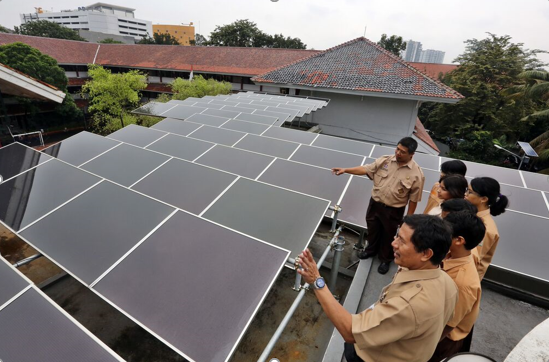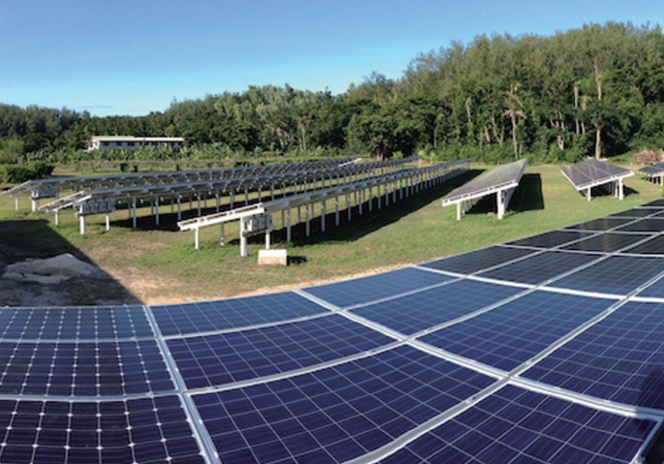
In 2016, solar power became the cheapest form of energy in 58 lower income countries, including China India and Brazil. In Europe, in 2016, 86% of the newly installed energy capacity was from renewable sources. Solar power will likely be the lowest-cost energy option in almost all parts of the world in less than 10 years. Is it all over for fossil fuels?
Tony Seba, Author of “Clean Disruption of Energy and Transportation,” predicts that the industrial era of centralized fossil-fuel based energy production and transportation will be all over by 2030. Solar energy and self-driving electric vehicles will take over. New business models will allow people to call a self-driving car on their phone for a ride, ending the need for private car ownership. This change will occur as quickly as the transition from horse-drawn carriages to cars a century ago. The Grantham Institute for Climate Change and the Environment at Imperial College London, and independent think-tank the Carbon Tracker Initiative echoed Seba’s prediction in their recent report, stating that electric vehicles and solar panels could dominate by 2020, sparking revolution in the energy sector and putting an end to demand growth for oil and coal.

The Global Green Growth Institute (GGGI) invited experts to debate Seba’s “clean disruption” last month at the World Economic Forum in Davos (see short summary of our conclusions here). We discussed what are the main impediments to a 100% clean energy infrastructure. The most immediate barriers are fossil fuel subsidies and current government legislation. The G20 countries pledged in 2009 to eliminate these subsidies, yet they continue to this day. Significant volumes of investment are shifting away from fossil fuels and towards alternative energy services, particularly in countries with binding renewable energy targets such as in Europe. The energy transition can accelerate through the removal of fossil fuel subsidies. Globally fossil fuel subsidies still amount to some $450 billion per year. Even African governments, with limited budgets and many competing priorities still subsidize fossil fuels to the tune of $20-25 billion per year according to Dr. Frannie Laeutier of the African Development Bank, speaking in Davos. The best way for governments to attract the private sector is to stand aside (i.e., remove impeding policies such as fossil fuel subsidies and enable market access) and let the market develop by itself. Easier said than done, of course, for countries with monopolistic power utilities, with large political influence; or for countries with heavy subsidies on electricity prices. GGGI supports its member governments to navigate this narrow path – to transform their economies towards a model of “green growth” that is sustainable and inclusive.

For the immediate future the technological impediment is energy storage. Current government and utility concerns relate to “baseload” supply offered by conventional energy sources restrict the potential seen for expanding the share of renewables. Falling Lithium-Ion battery prices and rapid developments of energy storage systems, including smart grid software, are changing the landscape. Energy storage deployments in emerging markets could increase by 40% annually over the next five years. There are two implications of cheap energy storage in the form, of the large batteries that power electrical vehicles, for example. First, in developed countries with full grid connectivity the motivation comes at the point of “god parity” as Tony Seba puts it - when the cost of local renewable energy generation and storage goes below the cost of transmission and distribution through the grid. We may reach this point in 5-10 years. After this there is no economic sense to purchase from the grid, and thus households will voluntarily detach from the grid. Second, in non-grid connected rural areas of developing countries – low-income household power consumption peaks in the morning and after dark, thus solar power without storage does not yet replace current forms of power. Once 15-hours of daily energy storage becomes affordable, decentralized solar power systems become the primary energy source, disrupting centralized grid-based energy systems.
At the IRENA Ministerial Conference in Abu Dhabi, also last month, the mood was remarkably upbeat on the technological potential of off-grid energy: investments in grid expansion are about to become less attractive than distributed energy systems to reach those that are currently still off-grid. But despite the annual doubling of installed solar capacity seen in recent years, renewables still only account for 7% of total energy generated globally. The key impediment is financial rather than technology. Because technology is changing at such a rapid pace, it is difficult for investors to accurately quantify technology risk and thus value finance offerings, which holds back competitive investment flows. For developing countries, the obstacles multiply as the finance issues are compounded with additional risks – foreign exchange as well as political - plus fragile grid connectivity. Domestic lenders (i.e., banks and other financial institutions) remain wary of lending to niche sectors like off-grid energy. This limits the growth and scale of operations for companies as they continue to rely on grants and equity to finance their operations. For example, in India, although the off-grid energy sector has been active for more than 3 years, very few companies have achieved a meaningful scale in their operations. A combination of smart technologies with innovative financing - and possibly risk reduction through government or international climate finance support - is seen as critical for these markets. While many large investors and companies are reluctant to enter developing country markets, there are interesting developments, such as the provision of packaged off-grid solar energy, with TV, cable programming and mobile payments to 750 thousand households in Kenya, or the installation of roof top solar for over 4 million homes in Bangladesh. Another common challenge is access to debt capital from domestic financial institutions due to the complexities earlier noted around valuation of technology and new market risk.
“Governments can show commitment to clean energy to instill confidence in investors and political stability.”
So, can governments do more than stand aside? Yes, returns that exceed the cost of capital are needed, so support may be needed in the form of concessional finance initially where cost of capital is high. Public capital is critical for accelerating private investment in emerging markets by providing appropriate risk coverage for investors. Governments can show commitment to clean energy to instill confidence in investors and political stability. At GGGI we help our Members and partner countries to accelerate their renewable energy targets through improved energy planning, development of bankable projects, and access to concessional finance such as climate finance through a number of sources including the Green Climate Fund. Blending international finance with domestic government sources can create the environment to reduce risk and attract private investment.
In short, rapidly falling prices of renewable energy, particularly solar PV, combined with cheaper energy storage systems, are not just transforming the energy markets but disrupting them. Changes are not gradual, but abrupt, creating tremendous opportunity, as well as introducing significant risks for incumbent power companies and ministries of energy. Many governments are still planning to build new coal-fired power plants – investments that have an economic life of 20 or more years. Will these become obsolete before they are paid off? Should governments invest to expand energy grids, or switch to solar-powered minigrids? These are critical questions many governments are struggling with – and the answers today are likely different than what they would have been just 3-5 years ago. From where we sit at GGGI, for investors looking for sustainable investment opportunities, the smart money is on renewable energy in emerging markets.
